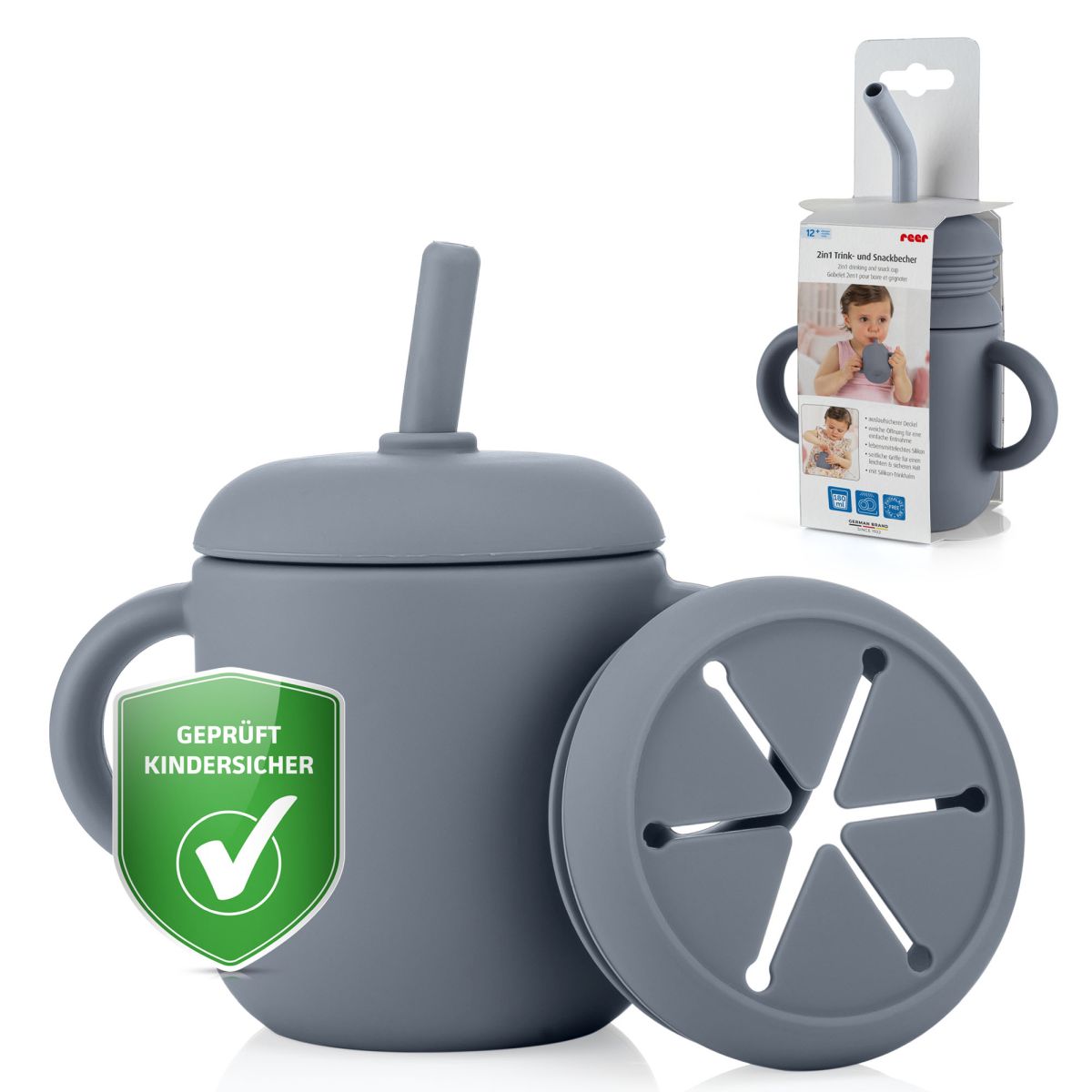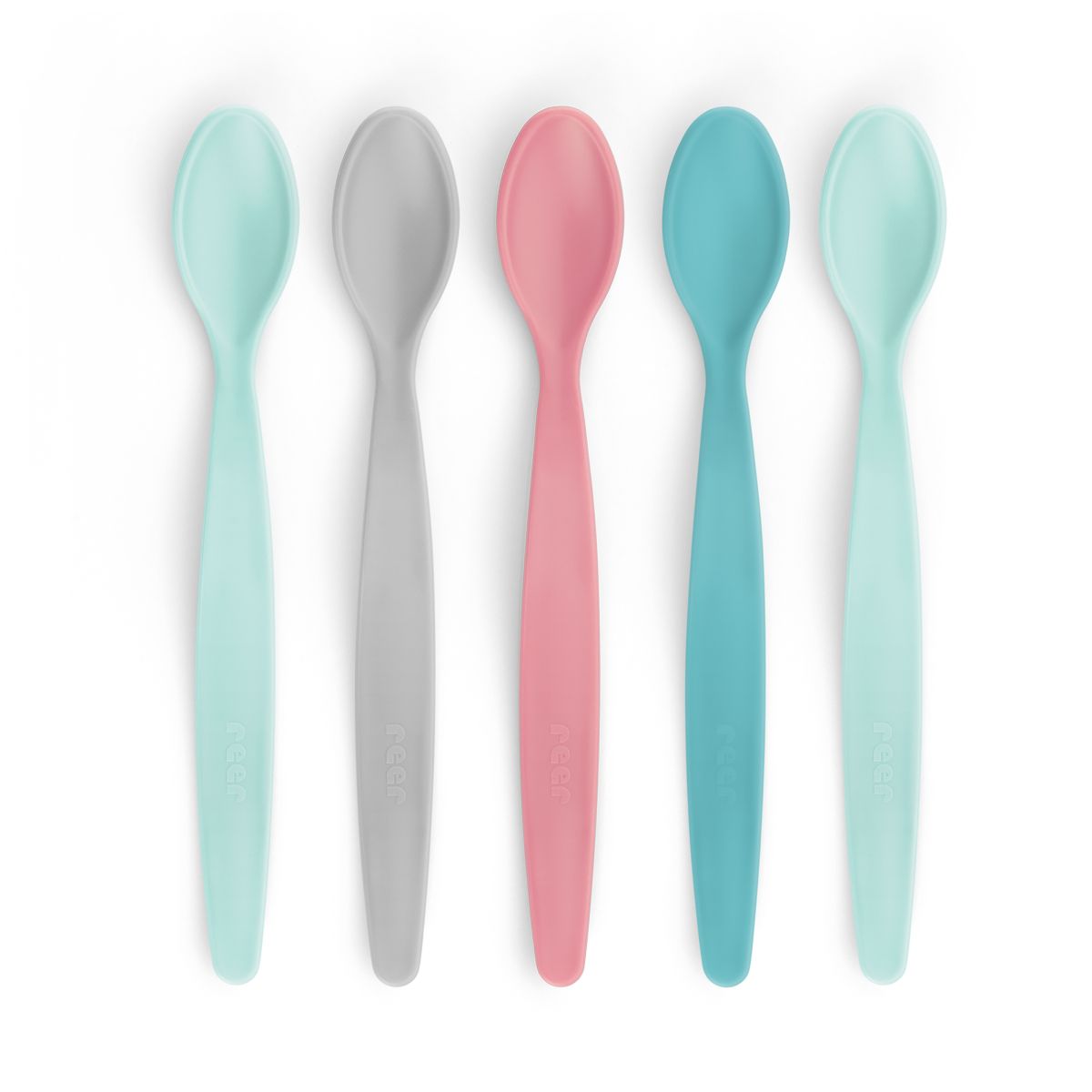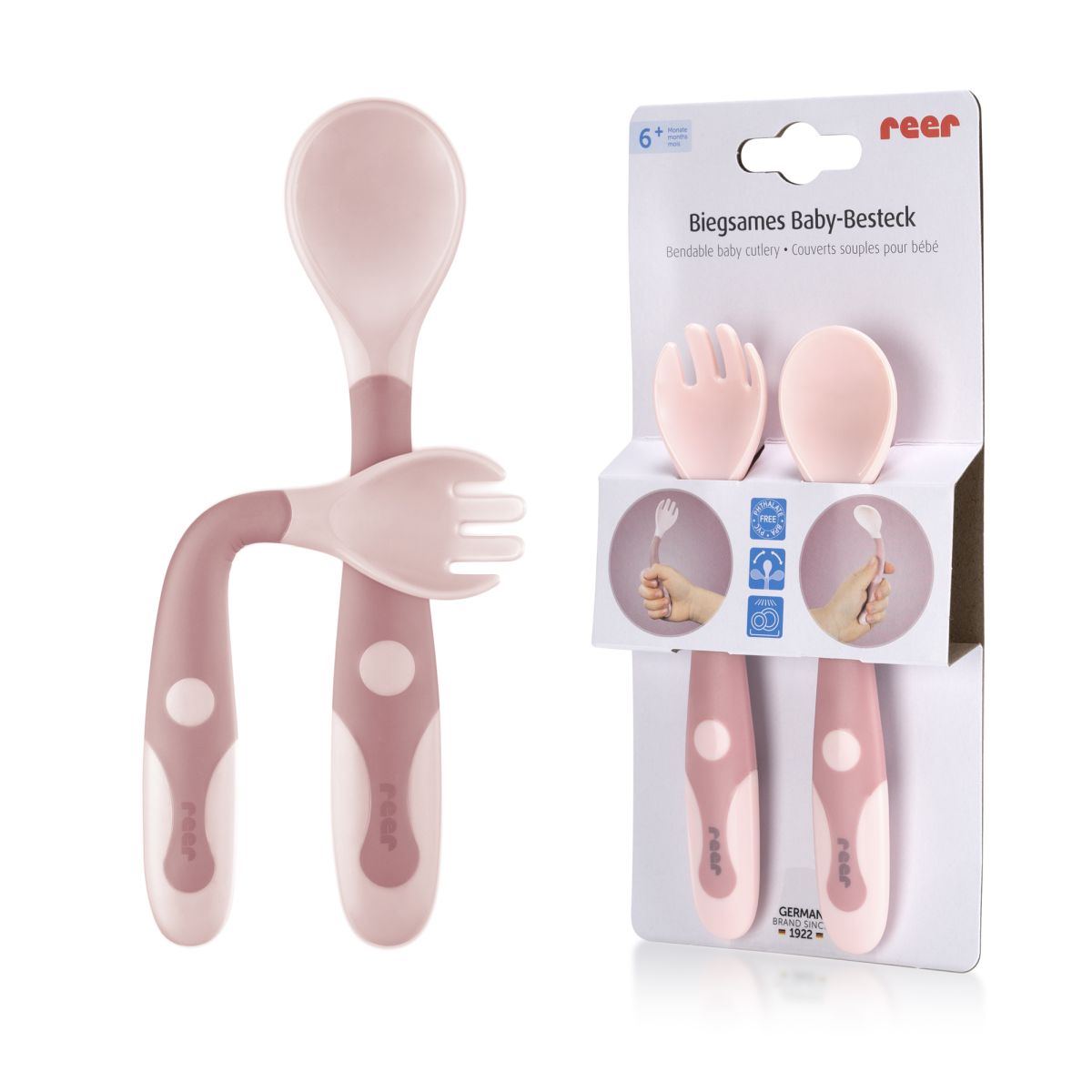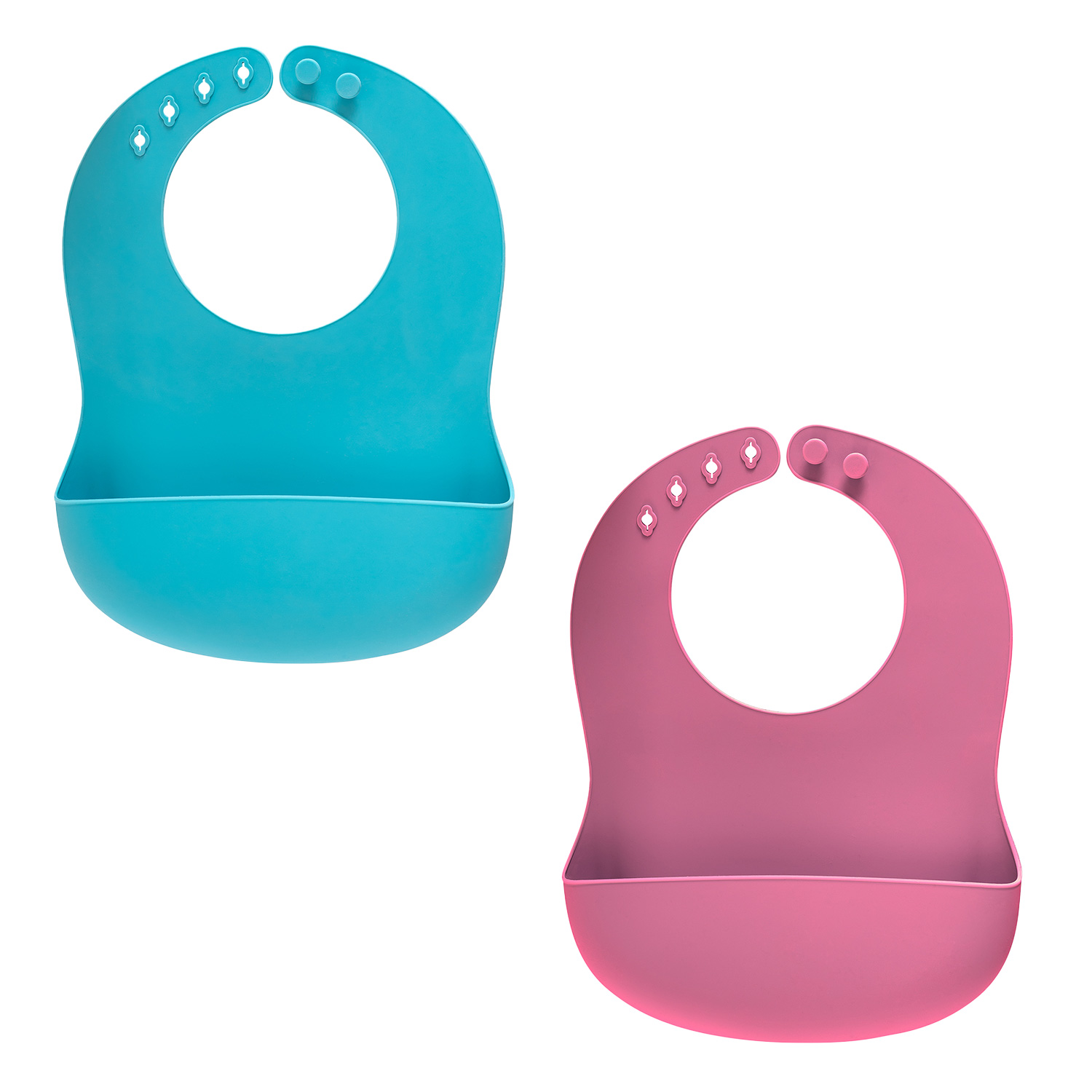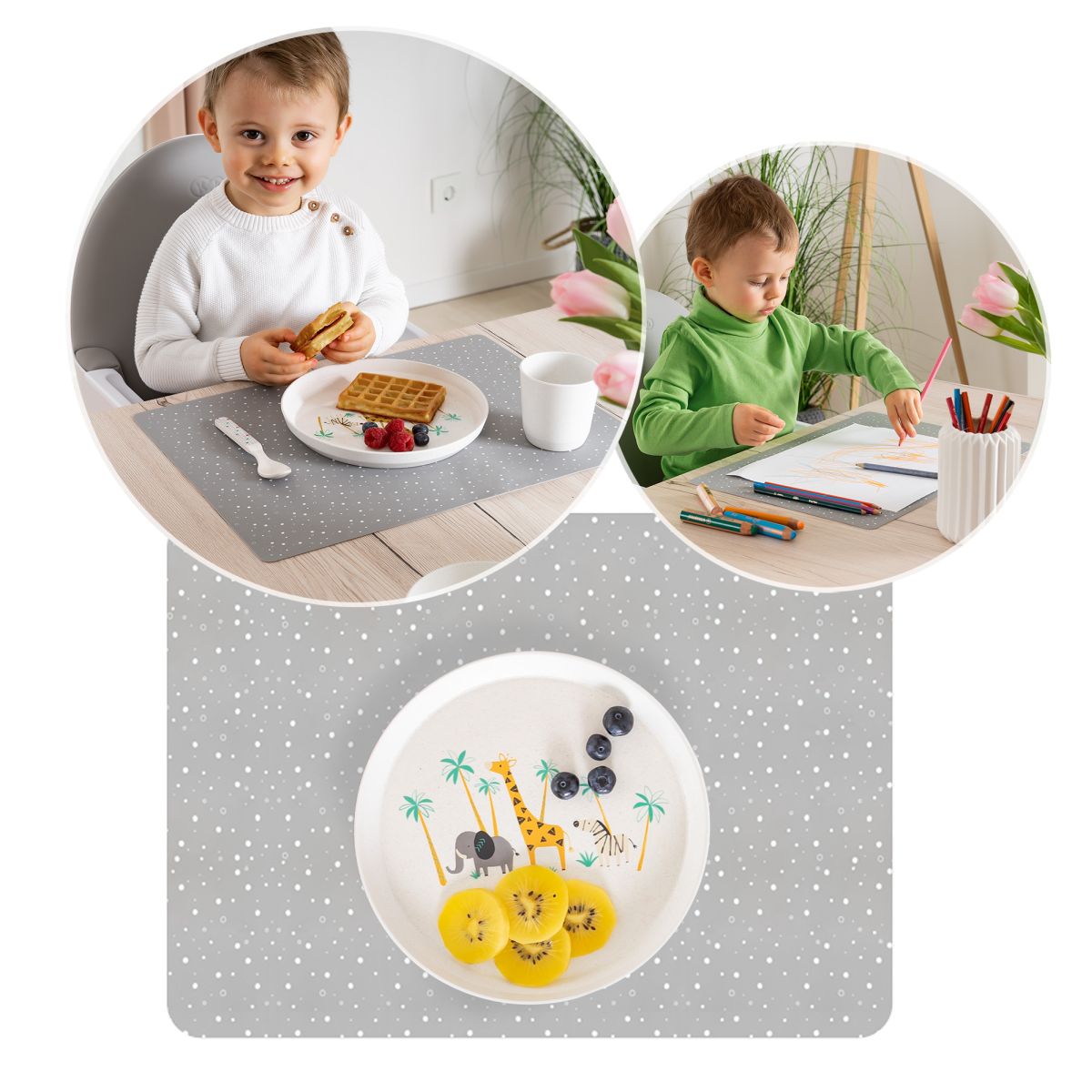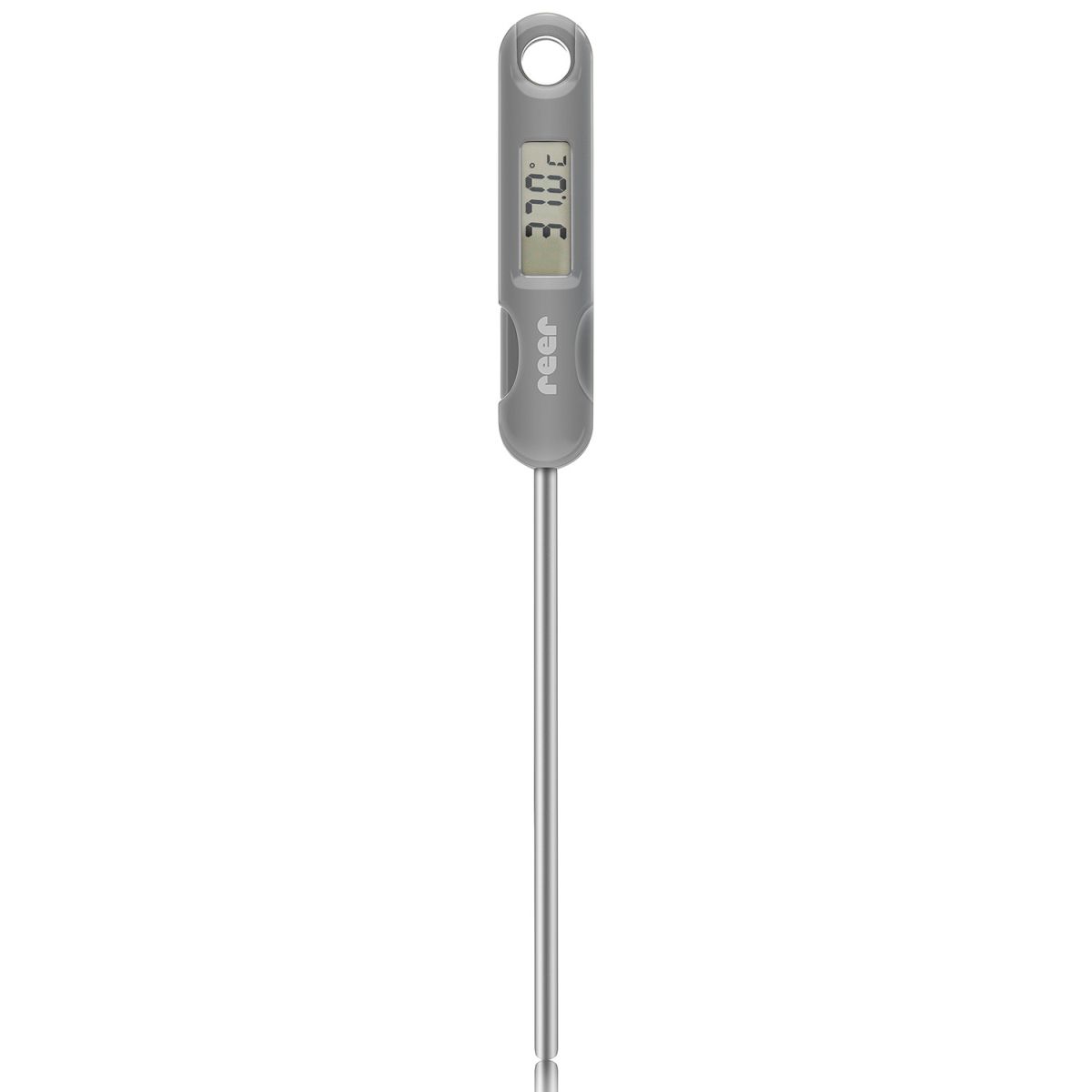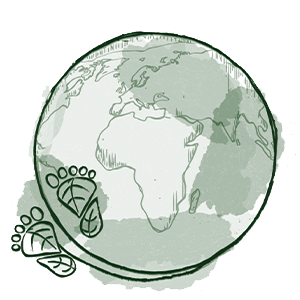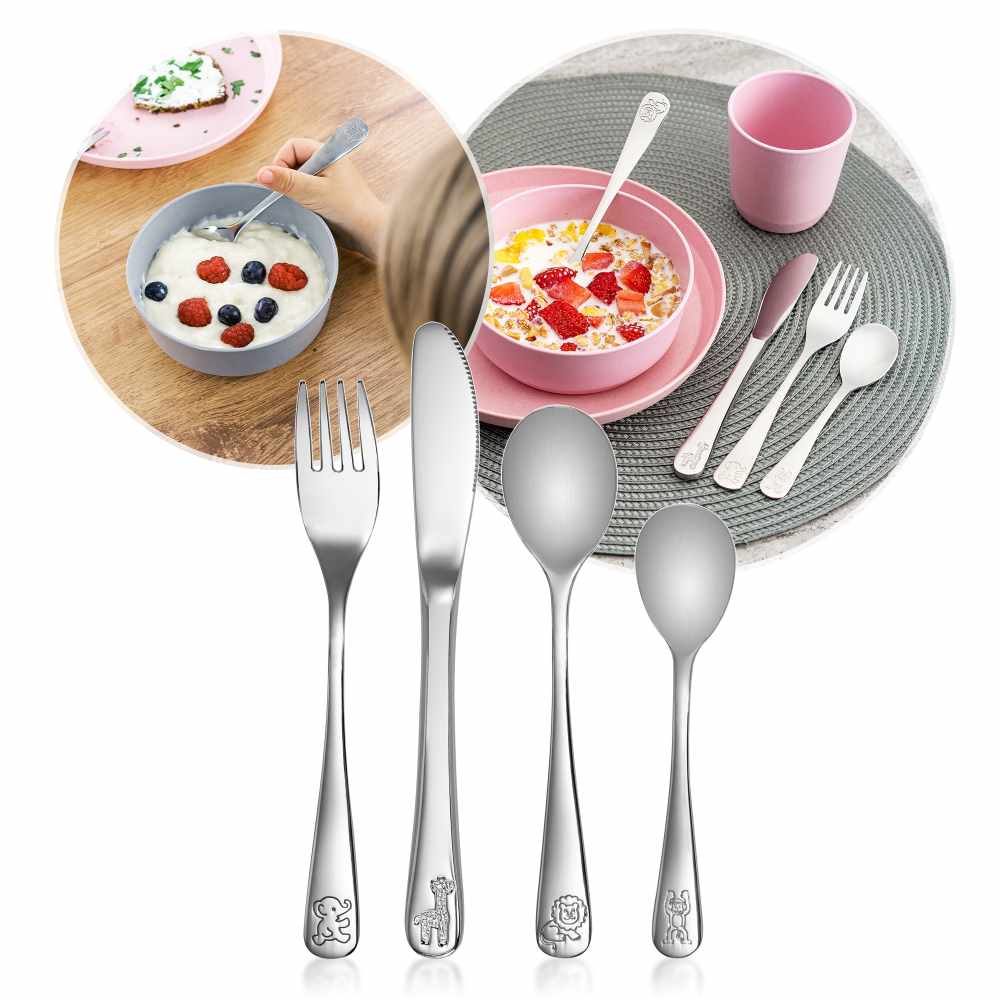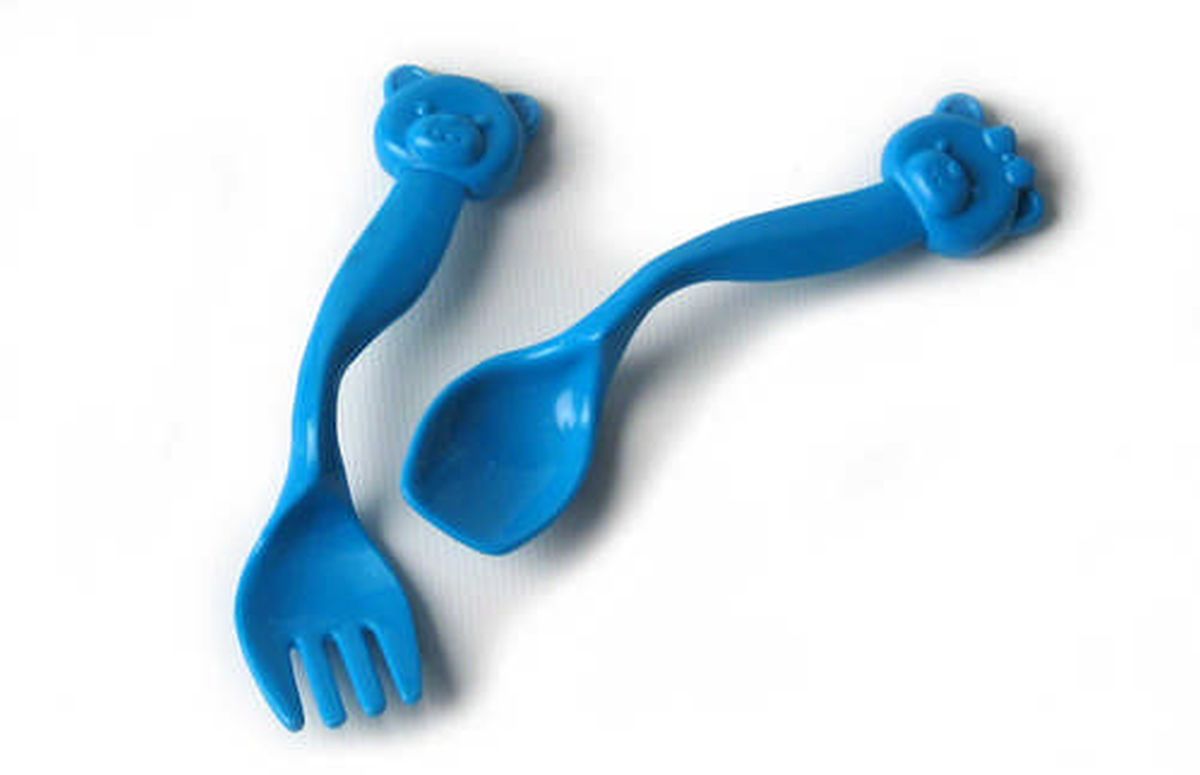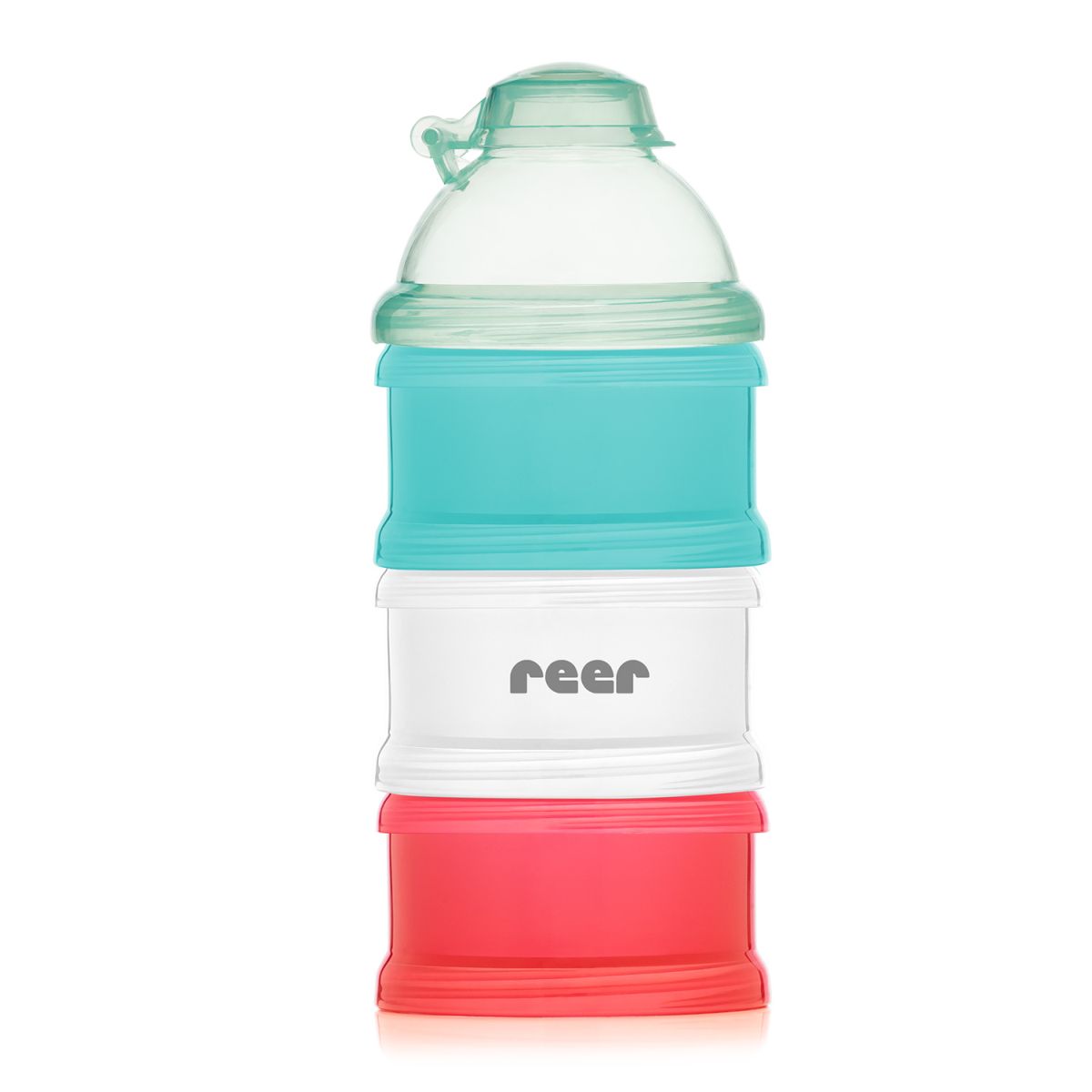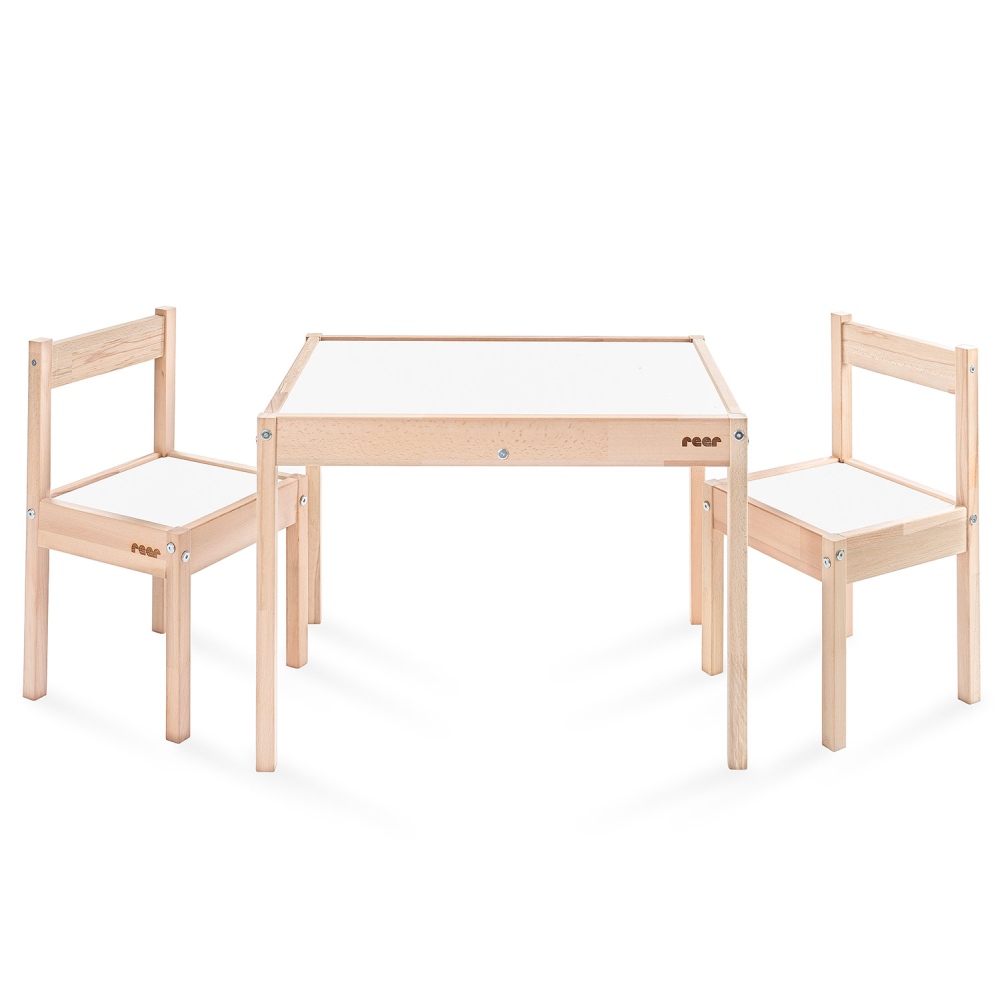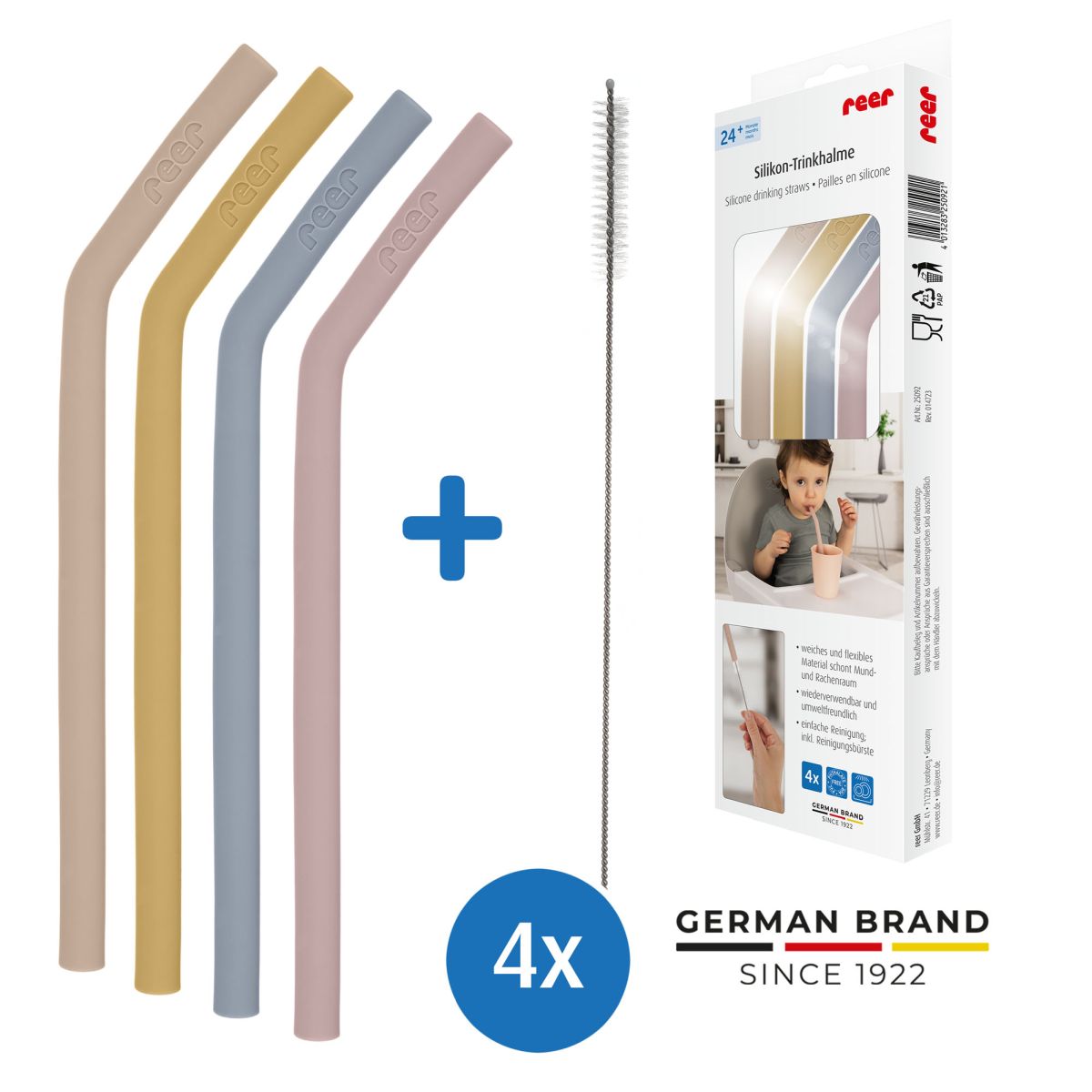Feeding Aids
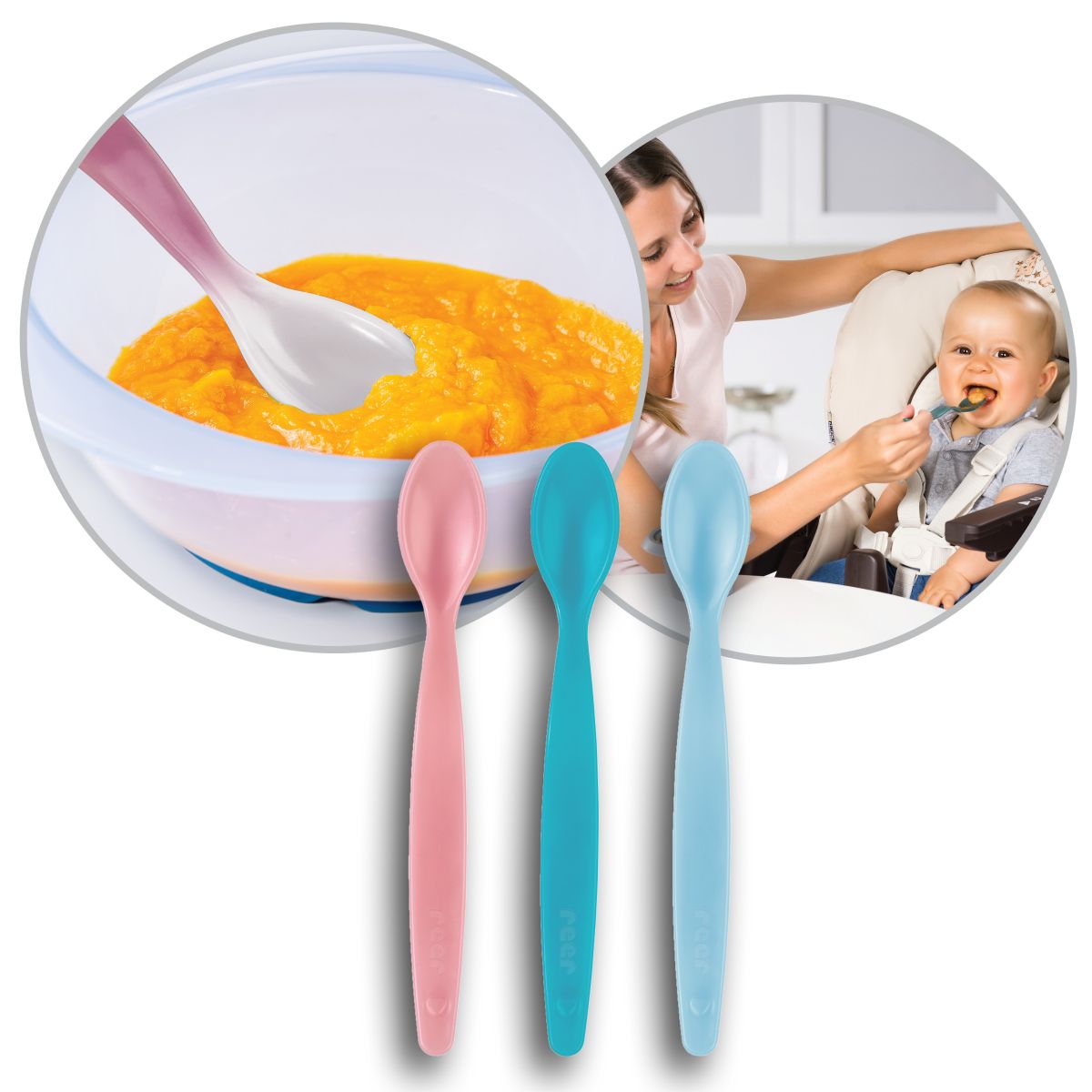
Your baby's first dishes and cutlery should be childsafe
How can I guide my baby's exploratory urge when it comes to eating?
Simply put, you will have to sit through the phase when children play with their food. This experience is important and necessary for your baby. Your little guy doesn't want to annoy you when he digs through the food with his fingers and then happily dumps it on the floor. This is about experimenting and finding out what happens to the food when you move it from the high chair.
In the early years, children live exclusively in their sensations. To limit the mess and make the dining area more child-proof, you should resort to large bibs and placemats to catch the biggest mess. Practice patience, this important but difficult phase will pass sooner than you think.
Why should I use special cutlery like a feeding spoon for my baby?
Adult cutlery is too big to fit in a baby's mouth and is also much too hard and sharp-edged. If you are switching from formula to that first porridge, you will need a special spoon to make eating safe and effective. At only five to six months old, your baby isn't yet able to eat the porridge with a spoon on its own. It instinctively opens its mouth, but it does not close it again. That's why you have to wipe the porridge off your baby's palate when you pull the spoon back so that the food falls onto your baby's tongue. This requires special gentler cutlery that is suitable for the size of the child's mouth.
Cutlery for adults is usually made of stainless steel. Therefore it is in no way suitable for feeding your baby. Feeding spoons are child-safe because they are mainly made of plastic and have rounded edges. Feeding requires flattened spoons that can be easily wiped on the palate and upper lip without hurting the gums.
Which dishes should I use?
When your baby is older she will want to eat on her own. At first, these efforts look more like a mud fight, but with each passing day, your little one understands mealtime just that little bit better. Soon your little darling will be able to handle his first child's cutlery and of course, this cutlery should be childsafe.
Shatter-proof plates and cups are not only necessary for the first independent eating attempts. With ever-increasing age, your baby will soon become a toddler who learns to express his feelings. If he doesn't like the food, he can show his displeasure very clearly by moving the plate and cup, including the contents, to the floor. This phase also ends, but until then the dishes and cutlery will often end up on the floor.
How can picky eaters be persuaded?
If your baby is one of those children who doesn't take a liking to their mealtimes, you can use this trick. Use dishes with fun themes that offer an incentive for their next meal. Carrots or porridge hides the picture on the plate. Therefore, your baby has to eat before the princess, unicorn or other interesting character can appear on the plate. You have to make sure your baby doesn't push the food off the plate energetically with his or her cutlery to skip right to the interesting picture hidden underneath.
Do I need a baby food warmer?
Baby food warmers have been an integral part of a baby's accessories for decades. Whether it's a jar of porridge or a bottle of tea - everything is warmed up and ready to serve in only a few minutes. Of course, baby food can also be warmed up in a pot and then fed. But with a baby food warmer you save on washing up.
In addition, porridge and tea can be kept warm continuously for a longer while. This is especially practical if your child asks for tea or a bottle of milk at night. You can prepare the drink and keep it at the right temperature in the baby food warmer until your baby wakes up and needs its bottle. There's no need to get up at night and warm it up, so feeding is made much more relaxed.



